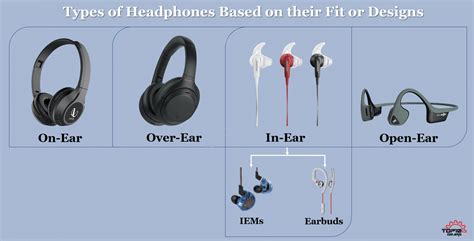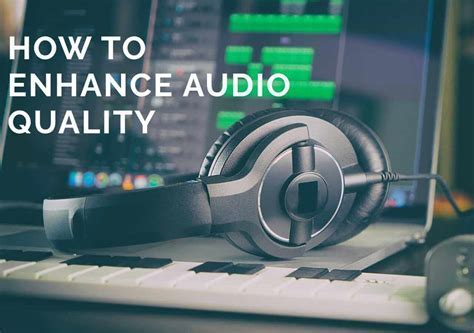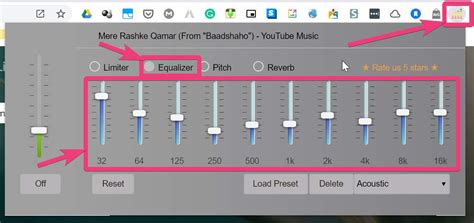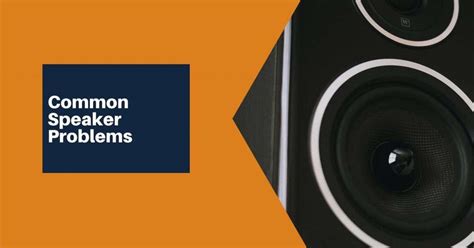Whether you crave soothing melodies or pounding beats, having the ability to control the sound quality of your personal audio device is paramount. The harmony between your ears and the speakers can make or break your listening experience. Thankfully, there are a few simple and effective ways to optimize your headphone speakers without the need for professional intervention. By mastering these techniques, you can unlock a whole new world of sonic delight.
Tweaking the Audio Output:
When it comes to audio, one size definitely does not fit all. Each individual has unique preferences when it comes to tone, bass, and overall sound quality. Fortunately, most modern headphones offer adjustable settings that allow you to tailor the audio output to your liking. This means you can emphasize the richness of the bass, enhance the clarity of the vocals, or fine-tune the level of treble according to your personal taste. By taking advantage of these built-in features, you can create a customized audio experience that suits your particular musical palette.
Mastering the Equalizer:
The equalizer is a powerful tool that can significantly affect the way you perceive sound. By manipulating the equalizer settings, you can control the frequency response of your headphone speakers, boosting or attenuating specific frequency bands. This provides you with the opportunity to compensate for any audio deficiencies and to amplify certain aspects of your music that you find particularly appealing. Whether you want to add warmth to classical compositions or make rock melodies more vibrant, understanding how to master your equalizer is key to unlocking the full potential of your headphone speakers.
Understanding the Various Settings on Your Headphones

In order to enhance your listening experience, it is essential to have a comprehensive understanding of the different settings available on your headphones. By grasping the functions and implications of each setting, you can tailor your headphone audio to suit your preferences and optimize their performance.
Volume Control: The volume control setting allows you to adjust the loudness of the audio output from your headphones. Turning the volume up will increase the sound level, while lowering it will decrease the intensity. It's important to find the right balance to avoid discomfort or potential hearing damage.
Equalizer: The equalizer setting is designed to modify the frequency response of your headphones, enabling you to adjust the balance of bass, midrange, and treble tones. By tweaking the equalizer, you can personalize your headphone audio to emphasize certain frequencies and enhance the overall sound quality.
Noise Cancellation: The noise cancellation setting aims to minimize external sounds that may interfere with your listening experience. This feature is particularly useful in noisy environments, as it isolates and cancels out background noise, allowing you to focus on the audio playback without distractions.
Surround Sound: The surround sound setting creates a more immersive audio experience by simulating spatial sound effects. It expands the sound stage, providing a sense of depth and directionality to the audio, enhancing your perception of different elements within the sound field.
Bluetooth Connectivity: Many headphones now offer wireless connectivity through Bluetooth. This setting allows you to connect your headphones to compatible devices without the need for cables. It provides freedom of movement and convenience, enabling you to enjoy your music or other audio content without being physically tethered to your device.
Microphone: Some headphones come with built-in microphones, allowing you to make hands-free phone calls or participate in online voice chats. The microphone setting enables you to capture and transmit your voice clearly, enhancing your communication capabilities while using your headphones.
Presets: Many headphones offer preset settings that are optimized for specific genres or applications, such as music, movies, gaming, or podcasts. These presets adjust various audio parameters to suit the specific content, delivering an enhanced audio experience tailored to your chosen activity.
Customization: Depending on the model and brand, some headphones may offer the ability to customize settings beyond the presets mentioned earlier. This may include the option to fine-tune specific audio qualities or create personalized profiles to suit your unique listening preferences.
By familiarizing yourself with the various settings your headphones offer, you can make the most of their capabilities and tailor your audio experience to your liking. Experimenting with different settings and finding the optimal combination will allow you to achieve the desired sound quality and immerse yourself fully in your favorite audio content.
The Significance of Proper Alignment for Headphone Audio Quality
When it comes to optimizing the performance of your headphone audio experience, ensuring proper alignment of the speaker components is of paramount importance. Adequate placement and positioning of the speakers within the headphone enclosure directly impact the sound quality and fidelity delivered to the listener's ears.
Accurate alignment allows for the optimal transmission of sound waves, ensuring that the various frequencies are reproduced faithfully and without distortion. Proper speaker alignment enhances the overall clarity, detail, and depth of the audio, creating a more immersive and enjoyable listening experience.
Moreover, correct alignment ensures the balanced distribution of sound across the stereo field. By positioning the speakers accurately, the audio signal can be precisely directed to the intended location, allowing for accurate localization of sounds. This results in a more lifelike and realistic soundstage, where individual elements within the music or audio track can be distinguished and perceived in their intended spatial positions.
Additionally, properly aligned headphone speakers contribute to improved frequency response, enabling the reproduction of a wider range of frequencies with greater accuracy. This ensures that the full spectrum of the music or audio content is faithfully reproduced, from the deep lows to the sparkling highs. A well-aligned speaker system can also help alleviate issues such as phase cancellation, comb filtering, and resonance, which can otherwise negatively impact the audio performance.
Ultimately, the proper alignment of headphone speakers is crucial for achieving the highest level of audio quality and fidelity. By considering the positioning, placement, and alignment of the speaker components, listeners can unlock the full potential of their headphones and enjoy a truly immersive and captivating audio experience.
Optimizing Sound Quality: Controlling Volume and Balance

Enhancing your auditory experience entails fine-tuning the levels of sound and distribution of audio signals for your listening pleasure. Achieving optimal volume and balance not only ensures a more immersive audio encounter but also safeguards against potential auditory fatigue or imbalances in audio perception.
To start, focus on the volume control, manipulating it to find a level that complements your personal preferences and environment. Adjusting the loudness while keeping it within a comfortable range is crucial to prevent distortion, maintain sound clarity, and safeguard the well-being of your hearings. Experimenting with various levels allows you to find the perfect balance that breathes life into your music without compromising the finer nuances.
In addition to volume, allocating the optimal balance between the left and right audio channels can significantly enhance your listening experience. Achieving proper stereo balance ensures that each ear receives an equal share of the musical spectrum, enabling you to fully appreciate the intricacies and spatial qualities of the audio. Adjusting the balance allows for a rich and well-rounded sound, granting you the ability to perceive music as the artist intended.
Moreover, keep in mind that personal sound preferences may vary, so it is essential to fine-tune settings according to individual needs. Some may prefer a more pronounced bass, while others prioritize a crisp treble. Adapt your adjustments to bring out the elements of sound that resonate most with you, allowing you to immerse yourself in the music on a deeper level.
By manipulating the volume and balance controls, you can unlock the full potential of your headphone listening experience. Paying careful attention to these aspects ensures that you can enjoy music, podcasts, or any other audio content with utmost clarity and satisfaction, enriching your auditory journey in the process.
Enhancing Bass and Treble Levels for Personalized Sound
In this section, we will explore techniques to optimize the bass and treble levels of your audio experience, allowing you to customize your sound and create a more immersive listening experience for yourself.
- 1. Adjusting the Bass:
- 2. Tweaking the Treble:
- 3. Utilizing Equalizer Settings:
- 4. Using Audio Enhancement Apps:
- 5. Considering External Sound Devices:
- 6. Comparing before and after:
One way to enhance the lower frequencies in your sound is by adjusting the bass levels on your device. By increasing the bass, you can add depth and richness to your music or audio. Experiment with different bass levels until you find the desired balance that suits your personal preferences.
On the other hand, if you wish to emphasize the higher frequencies in your sound, you can adjust the treble levels. This can bring out the clarity and crispness of vocals and instruments. Fine-tuning the treble can help you achieve a more vibrant and detailed sound.
Most audio devices come equipped with an equalizer, which allows you to manually adjust the sound frequencies according to your preferences. Take advantage of this feature to tailor the bass and treble levels precisely to your liking. Experiment with different presets or create your own custom equalizer settings.
If your device does not have built-in equalizer settings, you can explore third-party audio enhancement apps. These apps often provide a range of options to enhance and personalize your sound, including specific settings for bass and treble. Look for highly-rated apps that are compatible with your device and explore their features to enhance your audio experience.
If you are a true audiophile and want to take your sound customization to the next level, you can consider investing in external sound devices such as digital signal processors (DSPs) or headphone amplifiers. These devices often offer advanced controls for bass, treble, and other sound parameters, allowing for even greater customization and optimization of your headphone speakers' sound.
After making any adjustments to the bass and treble levels, it is always helpful to compare the sound before and after the changes. Listen to a familiar track or audio clip and pay attention to the differences in the overall sound quality. This will help you determine if the adjustments have successfully achieved the desired personalized sound.
Utilizing Equalizer Settings to Fine-tune Audio Output

Enhancing your auditory experience is all about finding the perfect balance in sound quality. One way to achieve this is by utilizing the equalizer settings on your device. By carefully adjusting the equalizer, you can customize the audio output to suit your preferences and create an immersive listening experience.
An equalizer is a tool that allows you to control the frequency response of audio signals. It consists of sliders or knobs that adjust specific frequency ranges, such as bass, midrange, and treble. Each frequency range corresponds to different aspects of sound, impacting the overall tonal balance of your headphones or speakers.
When utilizing the equalizer settings, it's important to understand the impact of each frequency range. Boosting the bass can add depth and richness to the sound, while increasing the treble can enhance clarity and detail. The midrange frequencies are responsible for vocals and instruments, so adjusting them can bring forward or push back certain elements in the audio mix.
To fine-tune your audio output, start by listening to different genres of music and paying attention to the areas that might need adjustment. If the bass feels overpowering, reduce the lower frequency range. Conversely, if the sound lacks body, try boosting the bass slightly. Experiment with different settings until you find the right balance for your ears.
Keep in mind that the ideal equalizer settings may vary from person to person and depend on the quality of your headphones or speakers. It's recommended to start with a neutral setting and make gradual adjustments based on your personal preferences. Don't be afraid to experiment and find the combination that delivers the most satisfying audio experience for you.
Tips for Tuning Headphone Pads for an Immersive Gaming Experience
When it comes to optimizing your audio setup for gaming, one crucial aspect to consider is how you tune your headphone pads. By adjusting the padding of your headphones, you can enhance the overall audio quality and create a more immersive gaming experience. In this section, we will explore some tips and techniques to help you fine-tune your headphone pads effectively.
1. Tweaking the Cushioning: By experimenting with different levels of cushioning, you can find the sweet spot that provides optimal comfort without compromising audio quality. Utilizing varying padding materials, such as memory foam or gel, can significantly impact the way sound resonates within the headphones.
2. Positioning Matters: Adjusting the positioning of the headphone pads can make a noticeable difference in audio perception. Placing the pads closer to your ears could enhance the bass response, while slightly pushing them further away may result in a more spacious soundstage.
3. Understanding Sound Isolation: The ability of headphone pads to isolate external noise is vital for an immersive gaming experience. Experimenting with different pad materials and designs can help you find the right balance between comfort and noise reduction, allowing you to focus solely on the game audio.
4. Customizing Equalization: Every gamer has unique audio preferences. By tweaking the equalization settings on your gaming device or software, you can tailor the sound signature to your liking. Adjust the frequencies to emphasize certain aspects, such as enhancing the crispness of high tones or boosting the deep rumble of explosions.
5. Regular Cleaning and Maintenance: Keeping your headphone pads clean is essential for optimal performance and longevity. Regularly removing dirt, dust, and sweat buildup can prevent deterioration of the padding material and maintain the audio quality that you desire.
Note: It is important to note that these tips are general guidelines, and the best settings for your headphones may vary based on personal preference and the specific characteristics of your gaming setup.
Incorporating these tips into your headphone tuning process can significantly enhance your gaming audio experience. Experiment with different adjustments and techniques to find the perfect settings that provide comfort, immersive sound, and complete audio customization.
Troubleshooting Common Speaker Configuration Problems

In this section, we will discuss various common issues that arise when adjusting the speakers of your audio device. We will provide troubleshooting tips and solutions to help you resolve these problems effectively.
| Issue | Possible Causes | Solution |
|---|---|---|
| No sound from the speakers | Loose connections, volume muted, faulty audio cable | Check connections, unmute volume, replace audio cable if necessary |
| Imbalanced sound output | Incorrect balance settings, damaged headphone jack | Adjust balance settings, inspect headphone jack for any damage |
| Poor audio quality | Dirt or debris in headphone ports, outdated audio drivers | Clean ports, update audio drivers to the latest version |
| Distorted sound | Overloaded audio signal, damaged speakers | Reduce audio signal, check speakers for any physical damage |
| Inconsistent volume levels | Software settings, unevenly adjusted equalizer | Check software settings, ensure equalizer settings are balanced |
By troubleshooting these common speaker adjustment issues, you can ensure optimal sound quality and enhance your overall audio experience. If the problems persist, it may be necessary to consult a professional or contact the manufacturer for further assistance.
The Advantages of Utilizing Headphone Amplifiers
When it comes to enhancing your audio experience, headphone amplifiers offer a multitude of benefits that can greatly improve the quality of sound reproduction. These amplifiers have the ability to amplify and fine-tune the audio signal, resulting in a more immersive and dynamic listening experience.
One of the main advantages of using headphone amplifiers is their ability to provide higher power output compared to the built-in amplifiers found in most devices. This increased power allows the speakers within the headphones to produce louder and more detailed sound, even at lower volume settings.
In addition to increased power, headphone amplifiers also offer improved control over the audio signal. They allow you to fine-tune the frequency response, adjust the gain, and control the overall volume to cater to your personal preferences. This level of customization ensures that you can optimize the sound reproduction to suit the specific genre of music or audio content you are listening to.
Furthermore, headphone amplifiers can significantly enhance the dynamic range of your headphones. They can provide cleaner and more accurate amplification, ensuring that every detail and nuance in the audio is accurately reproduced. This results in a more realistic and immersive listening experience, allowing you to fully appreciate the subtle intricacies of your favorite songs or audio recordings.
Another notable benefit of headphone amplifiers is their ability to drive high-impedance headphones. These amplifiers are specifically designed to power headphones with higher resistance, allowing them to deliver optimal performance. This is particularly beneficial for audiophiles or professionals who use high-impedance headphones, as it ensures that they can fully utilize the capabilities of their headphones and achieve the best possible sound quality.
| Benefits of Using Headphone Amplifiers: |
|---|
| - Increased power output for louder and more detailed sound |
| - Improved control over the audio signal for customization |
| - Enhanced dynamic range for more realistic sound reproduction |
| - Ability to drive high-impedance headphones for optimal performance |
The Impact of Environmental Factors on Speaker Adjustments

When it comes to optimizing the performance of audio devices, it is essential to consider the influence of environmental factors. The surroundings in which headphones or speakers are used can significantly affect their settings and overall sound quality. Understanding how environmental conditions can impact speaker adjustments is crucial for achieving the optimal audio experience.
1. Temperature: The temperature of the environment plays a significant role in the performance of headphone speakers. Extreme temperatures can affect the components of the speakers, causing a deviation in their sound output. High temperatures can lead to sound distortion or even damage to the speakers, while low temperatures can impact their overall efficiency. Therefore, it is essential to keep headphones or speakers in a climate-controlled environment to maintain their optimal performance.
2. Humidity: The level of humidity in the environment can also impact speaker adjustments. Excessive moisture can lead to the deterioration of speaker components, causing changes in their sound reproduction capabilities. High humidity can result in the formation of condensation, leading to speaker malfunction or distortion. On the other hand, low humidity levels can cause the speakers to become brittle and prone to damage. It is important to maintain a balanced humidity level to ensure the longevity and accurate sound reproduction of headphone speakers.
3. Noise: The presence of background noise or interference in the environment can affect speaker adjustments as well. External sounds can interfere with the perception of audio played through headphones or speakers, resulting in the need for adjustment to compensate for the noise. It is advisable to use headphones or speakers in a quiet environment to achieve the best sound quality and avoid the need for frequent adjustments.
4. Room Acoustics: The characteristics of the room or space in which speakers are used can also impact their adjustments. Factors such as room size, shape, and material composition can affect sound reflections, leading to changes in the perceived audio quality. The presence of echoes, reverberations, or dead spots in a room can alter the overall sound experience. Understanding the room acoustics and making appropriate adjustments to the speaker settings can help optimize the audio output.
5. Power Quality: The stability and quality of the power supply to the speakers can influence their adjustments. Fluctuations in power voltage or electrical noise can result in sound distortions or inconsistencies. Using power surge protectors or voltage regulators can help maintain a stable power supply and prevent any unwanted impact on speaker adjustments.
In conclusion, various environmental factors can significantly impact speaker adjustments and overall audio experience. It is crucial to consider temperature, humidity, noise, room acoustics, and power quality when optimizing the performance of headphones or speakers. By understanding and addressing these factors, users can ensure the best sound quality and longevity of their audio devices.
Expert Advice: Advanced Techniques for Audiophiles
In this section, we will explore a range of advanced techniques and strategies for experienced audiophiles looking to enhance their listening experience. By leveraging innovative methods and expert advice, you can optimize your audio setup and elevate your music enjoyment to new heights.
Tailoring Frequency Response
One of the key aspects of achieving optimal sound quality is fine-tuning the frequency response of your audio equipment. Explore the art of equalization and learn how to adjust the balance of low, mid, and high frequencies to suit your personal preferences. Understand how different genres and styles of music can benefit from specific frequency adjustments, allowing you to immerse yourself in an audio experience tailored to your unique taste.
Room Acoustics Optimization
Achieving the perfect sound goes beyond just the headphones or speakers themselves - it also involves optimizing the acoustic environment in which you listen to music. Discover advanced techniques for measuring and improving room acoustics, including the strategic placement of sound-absorbing materials and diffusers. Enhancing the quality of sound reflections and reducing unwanted echoes can significantly impact the clarity and depth of your audio reproduction.
Cable Considerations
While often overlooked, the choice of cables and connectors can have a noticeable impact on the overall audio performance. Dive into the world of high-quality cables, exploring the benefits of different materials and construction techniques. Learn how cable length, shielding, and termination types can influence signal integrity and minimize unwanted interference, ultimately enhancing the clarity and fidelity of your music playback.
Personalized Sound Profiles
Take advantage of cutting-edge technology and software to create personalized sound profiles tailored specifically to your hearing capabilities. Explore advanced audio calibration tools and techniques that allow you to adapt the audio output to match your unique hearing characteristics and compensate for any deficiencies. Unleash the full potential of your headphones or speakers by ensuring that the sound reproduction is optimized for your ears.
Optimizing Source Quality
While excellent audio equipment is vital, the quality of the source material can greatly impact the overall listening experience. Discover advanced techniques for optimizing the quality of your music files, such as using lossless audio formats and high-resolution recordings. Learn how to properly configure audio players and streaming services to ensure maximum fidelity and avoid any unnecessary degradation of the original sound.
- Explore the art of equalization for precise frequency adjustments.
- Optimize the acoustic environment for enhanced sound quality.
- Choose high-quality cables to minimize interference.
- Create personalized sound profiles to match your hearing capabilities.
- Maximize the source quality for the best audio experience.
How to Increase or Adjust Bass on Windows 10 Headphones and Speakers [2024]
How to Increase or Adjust Bass on Windows 10 Headphones and Speakers [2024] by MDTechVideos 104,520 views 2 years ago 1 minute, 43 seconds
Connect Speaker Wire to AUX | Speaker contact to mobile | No amplifier
Connect Speaker Wire to AUX | Speaker contact to mobile | No amplifier by Nasir Technical PK 1,419,714 views 2 years ago 3 minutes, 7 seconds
FAQ
Why do I need to adjust my headphone speakers?
Adjusting headphone speakers allows you to optimize the sound quality and ensure a comfortable listening experience.
What are the different ways to adjust headphone speakers?
There are several ways to adjust headphone speakers, such as changing the equalizer settings on your audio device, using software or apps specifically designed for headphone calibration, or physically adjusting the position of the speakers on the headband.
How do I change the equalizer settings on my audio device to adjust headphone speakers?
To change the equalizer settings on your audio device, go to the sound or audio settings menu and look for the equalizer option. From there, you can adjust the levels of different sound frequencies to achieve the desired sound quality for your headphones.
Are there any recommended software or apps for calibrating headphone speakers?
Yes, there are several recommended software and apps for calibrating headphone speakers. Some popular options include "Sonarworks Reference 4," "EQMac," and "Audeze Reveal+."
What should I do if physically adjusting the position of the headphone speakers doesn't improve the sound quality?
If physically adjusting the position of the headphone speakers doesn't improve the sound quality, you may need to consider replacing or upgrading your headphones. It's also worth checking if there are any software or firmware updates available for your headphones that could potentially enhance their performance.




